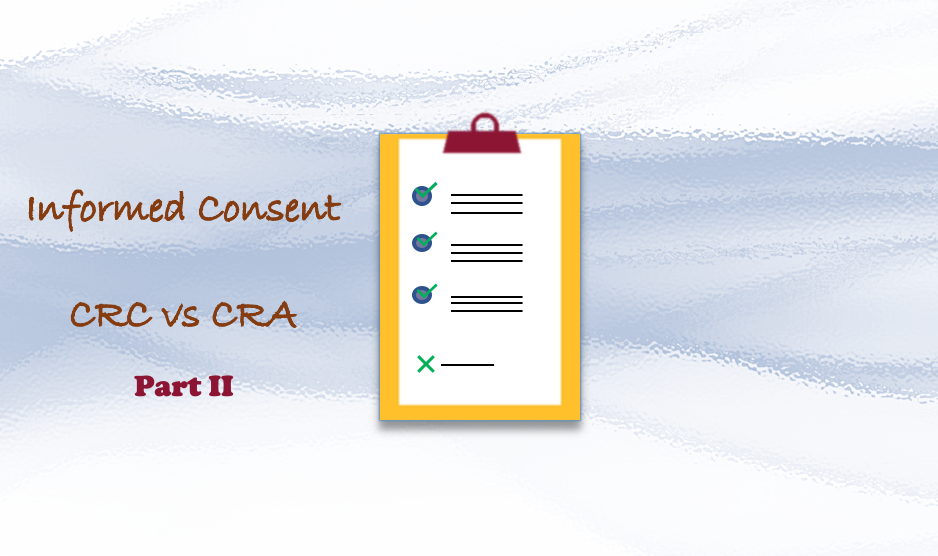The Informed Consent Form (ICF) is one of the documents that is reviewed by the CRA during the monitoring visit. It is the CRA responsibility to ensure that the patient (subject) has been consented, appropriately. If the consent is not signed or completed properly, additional training for the Clinical Research Coordinator (CRC) might be required to verify the safety of human research subjects. In the previous article, I provided the most important factors that the CRC should consider when obtaining the consent to the patients. In this article, I will explain the aspects of reviewing the consent form by a CRA:
The subject was consented prior to any study procedure
The CRA should make sure that the subject was adequately informed and consented prior to any study procedure. In order to confirm that, usually the CRA reviews the date of the screening visit or needs to check the lab draw times/dates. Therefore, the CRA will make sure that the consent was the first study procedure that was completed.
Ensure all associated documents are signed
Depending on the State that the trial is taking place, there are some extra steps that need to be followed during consenting a patient. For example, in California, each subject must sign the “CA Bill of Rights” document along with the consent. Checking that all associated documents are signed is critical.
Latest IRB approved version is signed
Through conducting a clinical study, there are some changes to the study protocol and the consent form. Changes to the informed consent documents, as well as any accompanying changes to the protocol, must be reviewed and approved by the IRB. Therefore, a study might have different versions of IRB approved consent forms. When reviewing the ICF, it is essential to ensure the subjects have signed the most recent IRB approved consent form.
All designated areas are signed and dated properly
Consent forms are lengthy and depending on the document there are different sections that require date, signature, and printed name of the subject and person obtaining the consent. By reviewing the signed sections, the CRA assess that the right person have signed the assigned sections.
The name, date and signatures should be identifiable
The printed name and date in the consent form should be easy to read by anyone. Also, the date format should be consistent in all pages. Moreover, the CRA should compare the hand-writing in each section to confirm that it has been written by the same person.
Overall, proper consenting of the subjects is required to verify the security and privacy of health data. The CRA reviews the consent form to validate the subjects are adequately informed of the study procedures, risks and benefits. If the consent is not signed or properly completed, the CRA should inform the study coordinator.

